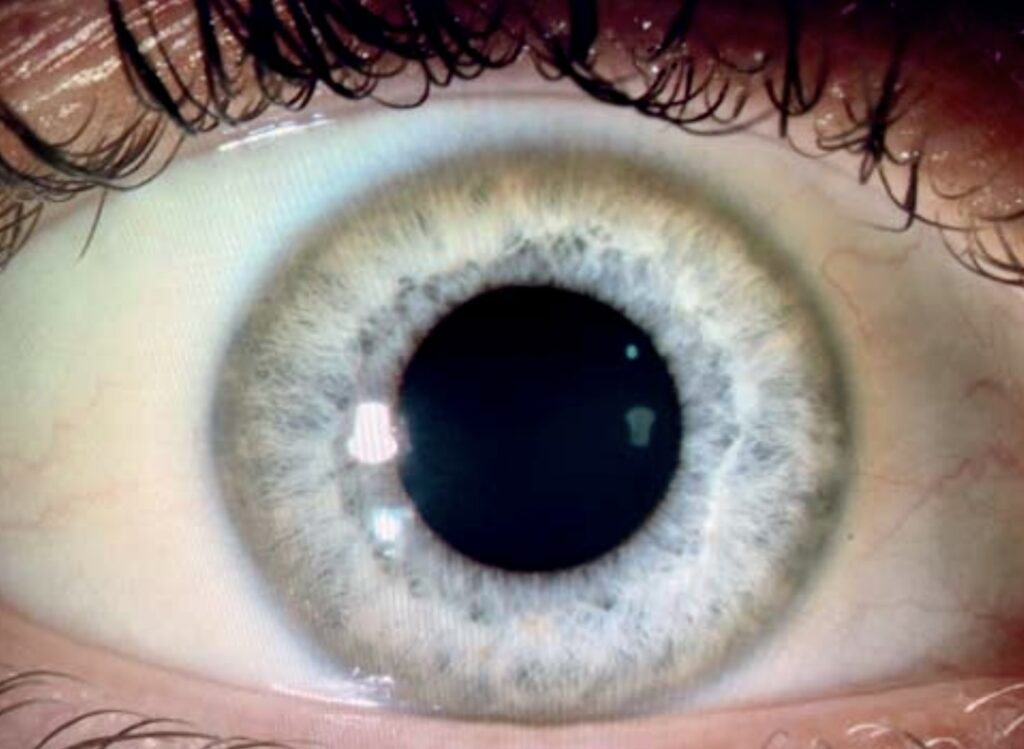Bernhard Kayser

Bernhard Kayser (1869-1954) was a German ophthalmologist.
Kayser was an ophthalmologist whose name is linked to the Kayser–Fleischer ring, the characteristic greenish-brown corneal pigmentation seen in Wilson’s disease. After earning his medical doctorate from the University of Berlin in 1893, he pursued early clinical work across Germany and served as a ship’s physician before settling in Stuttgart, where he practiced as an ophthalmologist for the rest of his career. In 1902, Kayser published the earliest description of a “greenish discolouration of the cornea” in a young man with multiple sclerosis, unknowingly documenting a hallmark of hepatolenticular degeneration.
Though Kayser did not associate the ring with liver disease or copper metabolism, his careful clinical observation laid the groundwork for future recognition of its pathophysiological significance. Alongside Bruno Fleischer, his name remains attached to one of the most visually distinctive signs in internal medicine. He also contributed to German ophthalmic literature as editor of the Klinische Monatsblätter für Augenheilkunde for many years. Despite his lasting eponymous legacy, little else is documented about his later life or academic output.
Biographical Timeline
- 1869 – Born on August 6 in Bremen, Germany.
- 1893 – Earned his medical doctorate from the University of Berlin.
- 1893–1900s – Completed early clinical work in Tübingen and Freiburg im Breisgau; also served as a ship’s physician with the North German Lloyd Shipping Company, later spending 2½ years in Brazil as a general practitioner.
- Early 1900s – Practiced in Brandenburg and Bremen, shifting focus to ophthalmology.
- 1903 – Became a specialist in ophthalmology and settled in Stuttgart, where he practiced for the rest of his life.
- 1902 – Published a case report of “greenish pigmentation of the cornea”, the earliest recorded description of what would later be recognised as the Kayser–Fleischer ring.
- Editor – Served for many years as editor of the essay section of the Klinische Monatsblätter für Augenheilkunde.
- 1954 – Died on May 11 in Stuttgart, aged 84.
Medical Eponyms
Kayser-Fleischer Ring (1902, 1903)
A golden-brown to greenish-brown ring at the level of Descemet’s membrane in the peripheral cornea, caused by copper deposition. It is a pathognomonic ocular sign of Wilson’s disease (hepatolenticular degeneration).

1902 — Kayser first reported a “greenish discoloration of the cornea” in a 23-year-old man with multiple sclerosis, calling it an angeborene grünliche Verfärbung der Kornea (“congenital greenish pigmentation”). Kayser proposed it was congenital, describing:
«Die Hornhaut erscheint hier undurchsichtig und von dunkelgrünbrauner Farbe… eine Anhäufung feiner gelber Flecken ganz nahe an der Hinterwand.»
Kayser, 1902
“The cornea appears opaque and of a dark greenish-brown colour… an accumulation of fine yellow spots close to the posterior surface.”
1903 – Bruno Fleischer (1874–1965) reported two further cases, localised the ring to Descemet’s membrane, and linked it to pseudosclerosis (now Wilson disease). He challenged Kayser’s congenital hypothesis and and excluded silver ingestion (“Argentum nitricum innerlich wurde nicht gebraucht”).:
«Bei beiden Kranken fand sich ein schmaler, grünlich-brauner, ringförmiger Streifen am Hornhautrand, im Bereiche der Descemetschen Membran…»
Fleischer, 1903
“In both patients there was a narrow greenish-brown ring at the margin of the cornea, in the region of Descemet’s membrane”
1934 — Werner Gerlach and Wilhelm Rohrschneider published the pivotal study disproving silver as the pigment’s basis. Using spectrographic analysis, they found the corneal ring to be “silberfrei… dagegen findet sich eine Spur Kupfer” (“free of silver, but containing a trace of copper”). This was the first definitive identification of copper as the deposited element, cementing the modern understanding of Wilson’s disease as a disorder of copper metabolism.
This pivotal observation disproved the earlier “silver” theory of Kayser and Fleischer, confirming that copper accumulation from impaired biliary excretion in Wilson’s disease caused the pathognomonic ring.
Major Publications
- Kayser B. Ueber einen Fall von angeborener grünlicher Verfärbung der Cornea. Klinische Monatsblatter für Augenheilkunde. 1902;40(2):22-25 [Kayser-Fleischer Ring]
References
Eponymous Terms
- Siemerling E, Oloff H. Pseudosclerose (WestphalStrumpell) mit cornealring (Kayser-Fleischer) under doppelseitger scheinkatarakt, die nur bei seitlicherbeleuchtung sichtbar ist und die, der nach verletzung durch kupfersplitterentstehenden katarakt ahnlich ist. Klinische Wochenschrift 1922; 1: 1087–1089.
- Gerlach W, Rohrschneider W. Besteht das Pigment des Kayser-Fleischerschen Hornhautringes aus Silber? Klinische Wochenschrift. 1934;13(2):48-49
- Fleischer B, Dening TR, Dening RG. Concerning a hitherto unknown disease resembling pseudosclerosis. History of Psychiatry. 1990; 1(4): 403-406 and 406-418
- Rohrbach JM. Vom Sinn und Unsinn ophthalmologischer Eponyme. Klin Monbl Augenheilkd 2015; 232(02): 193-195
- Bigdon E et al. Kayser-Fleischer-Ring – kann eine frühe Diagnosestellung den Krankheitsverlauf von Morbus Wilson verbessern? Klin Monbl Augenheilkd 2020; 237(10): 1237-1239
- Dooley JS. The history of Wilson disease. Clin Liver Dis (Hoboken). 2024 Jul 5;23(1):e0238
Eponym
the person behind the name
BM BCh, Oxford University. Currently training in Australia. Career interest in Hepatology and Emergency Medicine
BA MA (Oxon) MBChB (Edin) FACEM FFSEM. Emergency physician, Sir Charles Gairdner Hospital. Passion for rugby; medical history; medical education; and asynchronous learning #FOAMed evangelist. Co-founder and CTO of Life in the Fast lane | On Call: Principles and Protocol 4e| Eponyms | Books |

